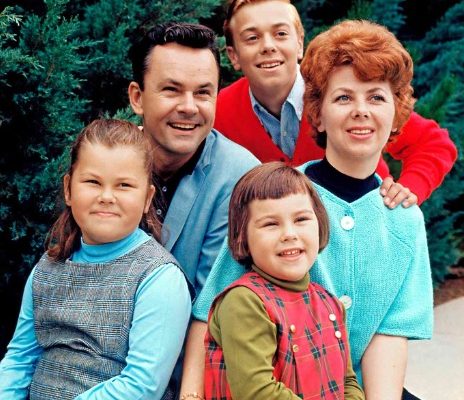The story of Bob Crane, the charming star of Hogan’s Heroes, took a tragic turn that still haunts Hollywood to this day.
He was found brutally murdered in his apartment, bludgeoned to death with an electrical cord tied around his neck.
The chilling tale captivated the nation, and while I remembered the shocking details of his death, I had forgotten the dramatic twist.
Hogan’s Heroes is a classic sitcom that delighted audiences on CBS from 1965 to 1971. Set in a German prisoner-of-war camp during World War II, it follows a clever group of Allied prisoners engaging in espionage and sabotage while trying to evade trouble.
While ’60s sitcoms weren’t known for their historical accuracy, Hogan’s Heroes thrived on pure entertainment and laughter, making it a timeless favorite. With its clever humor and lovable characters, the show offered a delightful escape without delving into anything overly sexual, violent, or political.
At the heart of it was Bob Crane, a tall, dark, and handsome actor reminiscent of Burt Reynolds, who brought charm and wit to the role. Tragically, Crane’s life was cut short by an unsolved murder that still haunts his legacy.

King of the airwaves
Robert Edward Crane was born in 1928 and showed off his talent as a drummer from a young age. Growing up in Connecticut, he began his career in entertainment as a radio host. His morning show in Los Angeles became a huge hit, attracting famous guests like Marilyn Monroe, Frank Sinatra, and Bob Hope. People soon started calling him the ”King of the Los Angeles Airwaves.”
In the 1960s, television producers noticed Crane’s charm and charisma, especially after he appeared on The Dick Van Dyke Show. But it was in 1965 that he truly hit the big time when he landed the starring role in Hogan’s Heroes, a classic sitcom that would make him a household name as the womanizing Col. Robert Hogan.
Love affair on set
Filming Hogan’s Heroes would also bring significant changes to Crane’s love life.
He first had a romance with his co-star Cynthia Lynn, who played Helga. Later, he fell for Lynn’s replacement, Patricia Olson, who portrayed Hilda. The complication? Crane had been married to his wife, Anne, for many years.

In 1970, he and Anne divorced just before their 21st anniversary, and later that year, he married Patricia Olson on the set of Hogan’s Heroes.
Not the biological father to his son
Bob and Patricia Olson welcomed their son, Scott Crane, in 1971 and later adopted a daughter, Ana Marie. However, Robert Crane (the son from Crane’s marriage to Anne), revealed that Bob was not the biological father of any of Patricia’s children.
When they married in 1970, Patricia was already pregnant. There was also a secret that shook the family: Bob had undergone a vasectomy in 1968 while still married to his first wife, meaning he couldn’t become a father.
After a few years together, the cracks in their relationship grew too wide, and the couple decided to separate in 1977. However, their divorce never finalized, as tragedy would soon unfold, leaving friends, colleagues, and family in deep shock.
The murder
TV star John Crane was found dead on June 29, 1978, in his luxurious apartment in Scottsdale, Arizona. He was in town to perform in a play.
When the police arrived, they discovered that the actor had been brutally beaten; his skull was crushed, and an electrical cord was tied around his neck. He was 49 years old at the time of his death.
According to the autopsy, the enigmatic actor had been bludgeoned to death with a weapon that was never identified, although investigators suspected it to be a camera tripod.
Discovered by his co-star
Reports indicated that Crane was asleep when he was attacked, and that nothing was missing from his apartment. His body was discovered by Australian actress Victoria Ann Berry, who grew worried and went to Crane’s apartment when he failed to show up for their town luncheon.
Arizona authorities admitted they had no leads at the outset and were puzzled by the case from the beginning. The fact that the Scottsdale Police Department did not have a homicide division in 1978 only complicated matters, as they were ill-equipped to handle such a high-profile murder.

However, as detectives began piecing together Crane’s final days, unsettling details emerged.
Crane’s extensive videotape collection became a crucial part of the investigation. It soon came to light that Crane frequently videotaped and photographed his sexual encounters. Notably, another man often appeared in these recordings: John Henry Carpenter.
A troubling truth
Crane and Carpenter had become friends during the filming of Hogan’s Heroes. Carpenter was introduced to Crane by their mutual friend, actor Richard Dawson, (Dawson served as the best man at Crane’s wedding to Patricia.)
John Carpenter was a high-ranking sales manager for Sony Electronics, often assisting famous clients with their video equipment.
He and Crane two began spending time together, sharing interests in visiting nightclubs and filming their escapades. Crane, being a major star, had little trouble attracting women at various bars, and Carpenter was often along for the ride.
Crane’s son, Robert, later insisted that all the women were aware of the videotaping and consented, but several claimed they had no idea they were recorded until informed by Scottsdale police after Crane’s murder.
Further investigation revealed that Carpenter also had a connection to the crime scene; he had flown to Phoenix days before the murder to spend time with Crane.

Carpenter was frequently seen with Crane in the days leading up to the murder, and several witnesses reported hearing the men argue.
When the police searched Carpenter’s rental car, they found several blood smears that matched Crane’s blood type. No one else of that blood type was known to have been in the car, including Carpenter. However, due to the lack of DNA testing at the time, police did not pursue the case further.
Re-opening the case
After 14 years, a breakthrough finally occurred.
Police were able to charge the man who had been the main suspect from the beginning. Investigators revisited the case and convinced the county attorney to reopen it.
While DNA testing on the blood found in Carpenter’s rental car was inconclusive, detectives discovered a photograph of the car’s interior that seemed to show a piece of brain tissue. Although the actual tissue samples recovered from the car had been lost, an Arizona judge ruled that the new evidence was admissible.
In June 1992, Carpenter was arrested and charged with Crane’s murder.
Critical reporters asked why it had taken 14 years to arrest the suspected murderer, prompting Maricopa County Attorney Richard Rowley to respond.
”There was a large amount of evidence and we had a lot of details to go over,” he said in 1992.
Trial
The trial of John Carpenter took place in 1994, 16 years after Crane was found murdered. It ended in disappointment for the family, especially for his son Robert, who revealed intriguing details during the proceedings.
Robert testified that his father had wanted to end his friendship with Carpenter just weeks before his death, describing the sales manager as ”a hanger-on” and ”a nuisance to the point of being obnoxious.” He also mentioned that Crane had called Carpenter the night before the murder to officially end their friendship.
During the trial, Prosecutor Bob Shutts presented a clear motive for the murder, arguing that Carpenter feared losing the influx of women that the skirt-chasing actor had provided him.
”Bob Crane became a source of women that he could never obtain for himself,” the prosecutor said.

However, the defense had a relatively easy task, as there were several details suggesting Carpenter’s innocence. Witnesses from the restaurant where the two had dined the evening before the murder indicated that they seemed to be on good terms just hours before the incident, contradicting any notion of a conflict.
No murder weapon was found, and the investigation had several shortcomings. The defense also proposed alternative suspects, including some of the women who had been unknowingly filmed or possibly their husbands.
Ultimately, Carpenter was acquitted. However, the same year, he was sentenced to three years of probation in a separate child molestation case.
Carpenter maintained his innocence in the Crane case until his death in 1998.
Dramatic allegations
After the trial, Robert made some dramatic allegations, speculating that his father’s widow, Patricia Olson, might have had a role in instigating the crime.
”Nobody got a dime out of [the murder],” he said, ”except for one person,” referring to Crane’s will. That will excluded Robert, his siblings, and his mother, leaving his entire estate to Patricia Olson.
He reiterated these suspicions in the 2015 book Crane: Sex, Celebrity, and My Father’s Unsolved Murder. Maricopa County District Attorney Rick Romley responded, ”We never characterized Patty as a suspect,” adding, ”I am convinced John Carpenter murdered Bob Crane.”
Long before Bob Crane met his tragic end in Phoenix, Arizona, he had already descended from Hollywood’s heights into a chaotic realm of showbiz misfortune. His life and untimely death were thrust back into the spotlight in 2002 with the release of the film Auto Focus, featuring Greg Kinnear as Crane and Willem Dafoe as John Carpenter.
”My dad loved women”
The film portrays Crane as a seemingly happy, church-going family man who succumbs to the temptations of fame after becoming a television star. He becomes entangled with John Carpenter and discovers the allure of new home video technology, leading him down a dark path of strip clubs and sex addiction.
This depiction aligns with the accounts of his son, Robert, who described his father’s dressing room as “porn central,” filled with Polaroids, negatives, and adult films.

”To find out that the all-American Hogan has this…some people call it a dark side, but I don’t think of it as a dark side,” says Robert. ”My dad loved women. I think he might have been overcompensating for the lack of a solid career in the final years, and maybe that fed his ego to meet a woman in a nightclub and they’d go off and sleep together. But I never looked at it as dark because it was consensual. There weren’t hidden cameras or anything,” his son Robert said in 2019.
However, Auto Focus was not without its critics among Crane’s family.
His son, Scotty, voiced his concerns about the film’s accuracy in an October 2002 review, stating that during the last twelve years of his life, Crane attended church only three times: for his baptism, at his father’s funeral, and for his own burial.
Scotty also said that his father struggled with sex addiction long before achieving stardom, suggesting that he may have begun recording his sexual encounters as early as 1956.
Bob Crane funeral
In the wake of his untimely death, Bob Crane received a farewell befitting a Hollywood star.
His funeral took place on July 5, 1978, at St. Paul the Apostle Catholic Church in Westwood, Los Angeles. The service was attended by around 200 family members and friends, including notable figures like John Astin, his wife Patty Duke, and Carroll O’Connor.

Among the pallbearers were Hogan’s Heroes producer Edward Feldman, co-stars Robert Clary and Larry Hovis, along with Crane’s son, Robert. The gathering was a poignant reminder of the impact Crane had on those who knew him.
An open wound
Unfortunately, Bob Crane’s tragic death would overshadow much of what he accomplished on stage, especially the events surrounding the murder investigation.
The murder not only claimed the life of a successful actor; it also shattered his family and created deep rifts among them. For instance, Robert Crane does not speak to his step-siblings, and his mother and sisters refuse to discuss what happened all those years ago in Scottsdale. It’s clearly an open wound.
Do you have any memories of Bob Crane? Do you remember when you heard about the murder? Feel free to share your thoughts in the comments section on Facebook.



